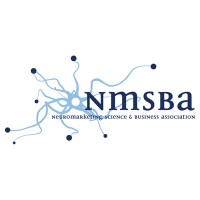Visual attention is a broad concept that includes multiple aspects of how individuals engage with visual stimuli. It refers to the cognitive process by which people selectively focus on specific elements within their visual field while filtering out irrelevant information .
Within the realm of visual attention research, various metrics serve as valuable indicators, offering insights into different facets of this complex phenomenon. Among these metrics, three significant ones stand out: Time to First Fixation (TTFF), Eye Ball Metric, and Time Spent.
Time to First Fixation (TTFF)
This metric measures in seconds how long it takes before a test participant fixates on an Area of Interest (AOI). TTFF is often used to assess the saliency and perceptual significance of various features within a visual scene (Mancini et al, 2022a)(AB Tobii - Version 3.4, 2016).
Eye Ball
This metric offers insights into the percentage of respondents who focused their attention on a specific Area of Interest (AOI). By knowing how many participants directed their attention to an AOI, researchers can assess the effectiveness of design elements, content, or features in capturing interest (Mancini et al, 2022b)(AB Tobii - Version 3.4, 2016).
Time spent (or Dwell time)
This metric measures the duration in seconds individuals spend focusing on a specific Area of Interest (AOI). Sometimes, an increase in the time spent observing a particular part of the stimulus may suggest heightened interest, as participants choose to disregard other peripheral stimuli (Mancini et al, 2023)(AB Tobii - Version 3.4, 2016).
These metrics, derived from eye tracking data, offer profound insights across various domains such as advertising, digital technologies, customer experience, and virtual reality research. Their evaluation in neuromarketing can reveal subconscious responses to advertisements, enabling tailored campaigns for increased engagement (Cherubino et al, 2019). Advertisers leverage eye tracking to optimize design elements and placement strategies, enhancing brand impact. In digital landscapes, UI/UX designers refine layouts and interfaces based on gaze patterns and interaction preferences, maximizing usability. Eye tracking enhances CX research by identifying areas for improvement in physical and retail environments, fostering customer loyalty. Furthermore, in virtual reality, analyzing users' visual attention refines VR experiences, improving immersion and content creation (Mancini et al, 2021). Overall, eye tracking metrics drive innovation and optimization, transcending disciplinary boundaries for impactful insights and advancements.
REFERENCES
- Cherubino, Patrizia, et al. "Consumer behaviour through the eyes of neurophysiological measures: State-of-the-art and future trends." Computational intelligence and neuroscience 2019 (2019).
- Mancini, Marco, et al. "Esports and visual attention: evaluating in-game advertising through eye-tracking during the game viewing experience." Brain Sciences 12.10 (2022a): 1345.
- Mancini, Marco, et al. "Forefront users’ experience evaluation by employing together virtual reality and electroencephalography: a case study on cognitive effects of scents." Brain Sciences 11.2 (2021): 256.
- Mancini, Marco, et al. "Neuroscientific methods for exploring user perceptions while dealing with Mobile Advertising: A novel and integrated approach." Frontiers in Neuroergonomics 3 (2022b): 835648.
- Mancini, Marco, et al. "What Is behind In-Stream Advertising on YouTube? A Remote Neuromarketing Study employing Eye-Tracking and Facial Coding techniques." Brain Sciences 13.10 (2023): 1481.
- Tobii, A. B. "Tobii Studio user’s manual." Version 3.4 5 (2016): 1-170.



